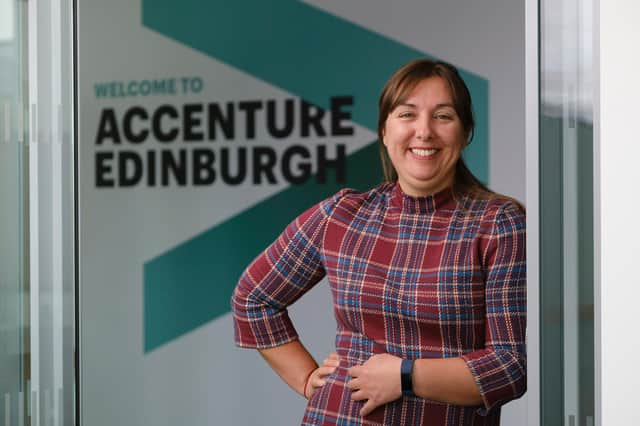There’s no place like home and office for best work practice - Michelle Hawkins


The same study, Accenture’s Future of Work: Productive Anywhere, found that workers fared much better in a hybrid work model. Better mental health, stronger work relationships and less burnout were experienced by those who had the ability to work both remotely and in an office environment, when compared to those who worked entirely onsite or entirely at home.
While this might be intuitive, delve a bit deeper and what really made the difference was not necessarily the place of work, but the resources that were available to workers.
Advertisement
Hide AdAdvertisement
Hide AdThis is critical as we consider the workplace and the future of work post-pandemic.
While hybrid working – the ability to work remotely between 25% and 75% of the time – was preferred as a future option by 83% of those surveyed, this is simply not possible for everyone. Approximately, 25% of our sample worked fully onsite throughout the pandemic and are likely to remain onsite for the foreseeable future. Therefore, in the quest to optimise remote work, we must also reimagine onsite working and provide the resources to enable people to be healthy and productive.
The question we should be asking is not so much ‘where to work?’ but ‘what unleashes a person’s potential?’ The better approach is to ask what drives people to be productive, healthy and effective.
Working within a hybrid model is seen as the best of both worlds. In fact, a recent Accenture survey found that 70% of Scotland’s financial services employees would prefer to work just two days a week or less in the office, while a flexible working schedule (i.e. days or hours) was the number one initiative workers wanted from their employers. Some 69% said that this would help them adjust to working life post-pandemic.
With more flexibility, 40% of workers say they could be productive whether on site or at home. Indeed, it’s the resources available at both the individual and organisational level that make a difference.
On a personal level, those who were given the freedom to manage their own time and were held to realistic performance targets considered these to be key ‘resources’. Another was having the digital skills to navigate online collaboration tools effectively and securely.
At an organisational level, the differentiating factors included an organisation’s ability to communicate individuals’ roles, implementing safe working environments with, for example, touchless technologies, and putting in place contingency plans to address unexpected issues.
The extent to which an organisation has a strong digital vision which is clearly communicated and endorsed through employee training and upskilling opportunities was also considered important in driving employee innovation, collaboration and mobility.
Advertisement
Hide AdAdvertisement
Hide AdHowever, the shift towards softer skills and understanding individuals’ needs was also significant. The pandemic has moved mental resilience to the mainstream of many companies’ consciousness, and it is a priority that affects all business metrics.
Employees need their colleagues and their organisations to help them feel more positive. The extent to which people feel connected to others and are included as part of a strong social network at work are essential. This requires business leaders to be active listeners and demonstrate care and consideration for the well-being, productivity and personal development of their staff.
Mental health and wellness are now clearly business issues and the very things that people need to help them emerge from the pandemic stronger are being innovative, being creative and working with agility.
In the future of work there is no one size fits all. Organisations must respond to the needs of all types of workers and those that support psychological and physical safety will foster trust from their employees.
What will work look like in the future? It’s less about the place. It’s more about providing the resources that unleash people’s potential.
Michelle Hawkins, Managing Director, Accenture Scotland
Comments
Want to join the conversation? Please or to comment on this article.